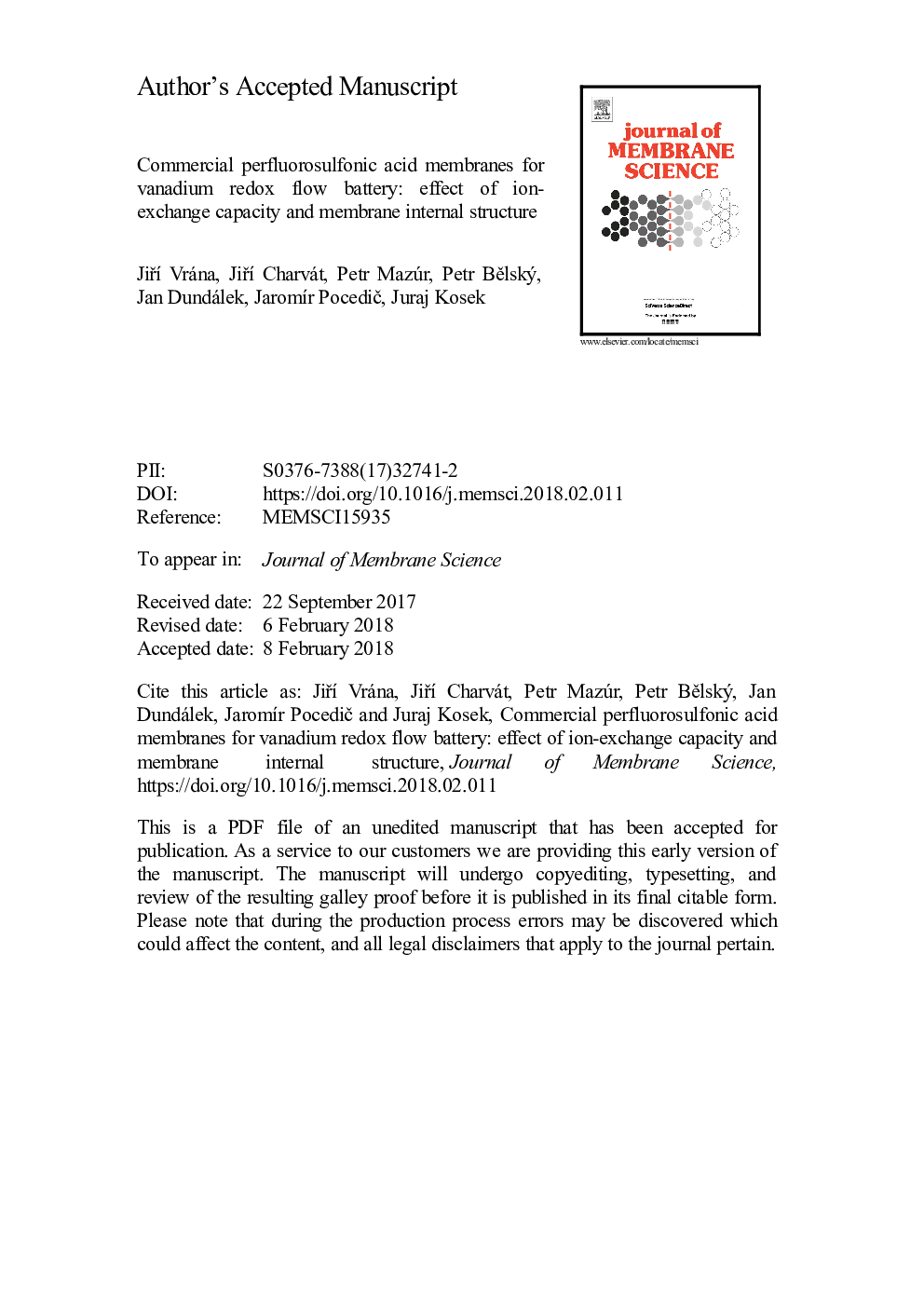| Article ID | Journal | Published Year | Pages | File Type |
|---|---|---|---|---|
| 7020048 | Journal of Membrane Science | 2018 | 39 Pages |
Abstract
A series of perfluorosulfonic membranes is screened for application in vanadium redox flow batteries (VRFB): membranes of constant thickness 50â¯Âµm with different ion-exchange capacities ranging from 0.56 to 1.15â¯molâ¯eq.â¯gâ1. Diffusion flux of each vanadium ion occurring in VRFB electrolytes through each examined membrane is measured by UV/Vis spectroscopy. Permeation of V2+ ions contributes most to the self-discharge losses and the mechanism of vanadium ions permeation is discussed for all oxidation states. The membranes are characterized in the single-cell by electrochemical impedance spectroscopy, load curve measurements with linearly increasing current and charge-discharge cycles at various current densities ranging from 50 to 200â¯mAâ¯cmâ2. Generally, at lower current densities the permeation of vanadium ions decreases the battery efficiency and thus lower ion-exchange capacity membranes are more suitable. Concurrently, at higher current densities the battery efficiency is decreased by the membrane resistance and thus higher ion-exchange capacity membranes are optimal. However, membrane ion-exchange capacity is not the only characteristic that affects the VRFB performance. Small-angle X-ray scattering of membranes revealed the effect of polymer molecular architecture on the size of hydrophilic domains which affects the membrane transport properties.
Related Topics
Physical Sciences and Engineering
Chemical Engineering
Filtration and Separation
Authors
JiÅà Vrána, JiÅà Charvát, Petr Mazúr, Petr BÄlský, Jan Dundálek, JaromÃr PocediÄ, Juraj Kosek,
